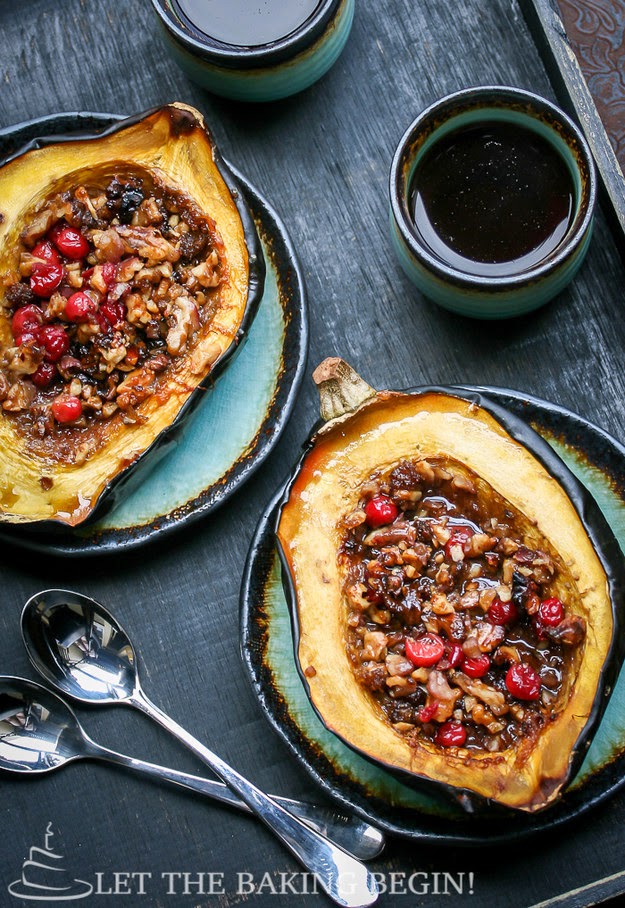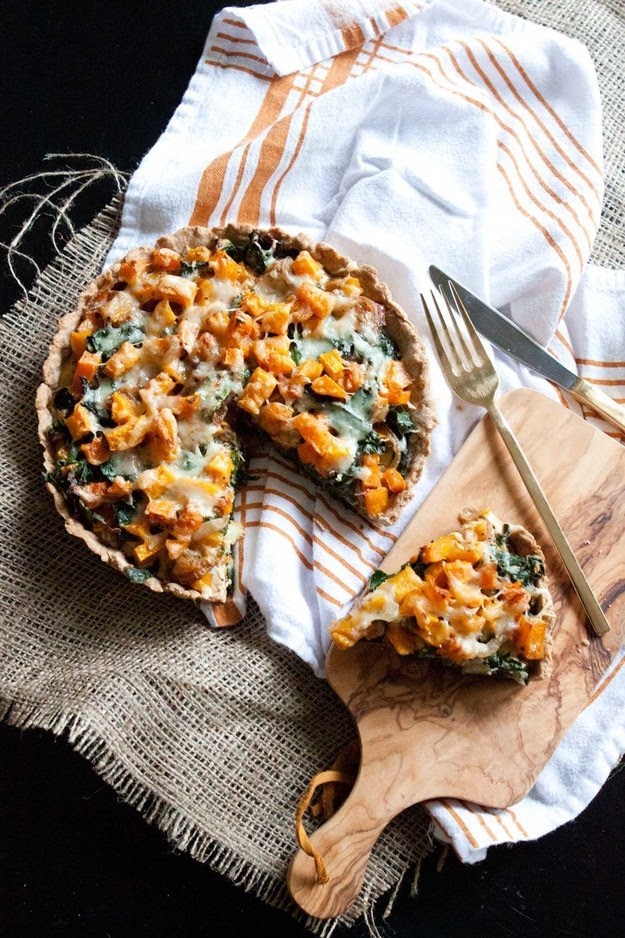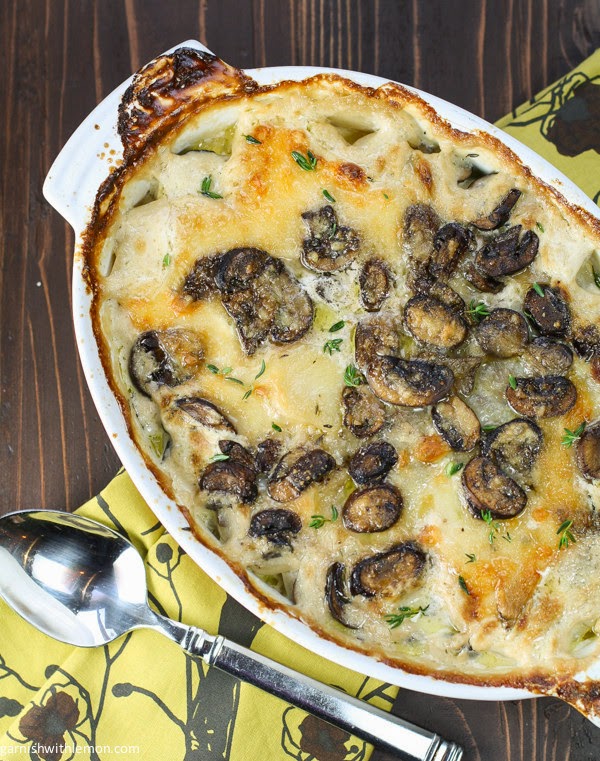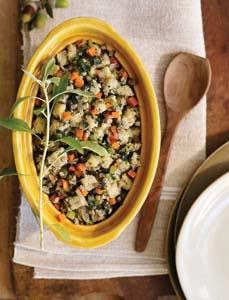Fall is here and winter waiting on our door steps, the garden is dying back, the plants have shed their last seeds and are being tucked in for their winter beauty sleep. As our own energy starts to move inward as well and our bodies are getting ready for the colder season, it is the perfect time to strengthen and support the respiratory system.
In this part of
Mother Earth News “Plant a Medicinal Herb Garden” series we will look at easy to grow herbs that will support and heal the the lungs, throat and sinuses, while adding flavor to your kitchen and beautifying your garden.
Hyssop (Hyssopus officinalis)
Hyssop is a sun loving, perennial, low growing shrub with beautiful dark blue blossoms that attract many bees and pollinators. Hummingbirds love it too. Hyssop is drought resistant and does well in poor and sandy soil. It is an herb in the mint family and has a delicious aromatic and minty scent. Hyssop's warming energetics make it a fine remedy for a stubborn cough and shivers. The responsible medicinal constituents are soothing to the lungs and help to loosen and expel mucus when taken internally (see recipes below). In addition, hyssop is a good carminative, meaning it supports healthy digestion and prevents formation of gas.
How to Make a Tincture
Here is the link again to Rosemary Gladstar's video on
How to Make a Tincture in case you have never made one before. It is an easy process to make your own green medicine from freshly picked herbs from your garden. You will pay a fraction of the cost compared to a store bought tincture and your medicine will be just as effective if not more potent with the help of your intentions and the love you gave to the plant in your garden. When you grow your own medicine, you ultimately give that attention and love to yourself.
How to Make an Oxymel
An
oxymel is another very good tasting way to extract the medicinal constituents from hyssop. Instead of using alcohol as a solvent, organic apple cider vinegar and raw honey are combined. You can take a teaspoon straight up as needed during a cough or cold or add it to salad dressings as a delicious culinary treat with many health benefits.
To harvest hyssop, cut the flowering tops in early summer when the flowers are just about to open. At this time, the plant holds the highest concentrations of medicinal essential oils. The plant will grow new flowers and you can harvest a second time later in the year.
Anise Hyssop (Agastache foeniculum)
Just like hyssop, anise hyssop is also a hardy perennial herb in the mint family. It grows up to 4 feet tall with heart-shaped leaves that have a pretty purple rim. The stalks of light purple flowers are a favorite of bees and bumblebees. It is self-seeding and will happily spread around your garden. Leaves and flowers have a subtle licorice aroma, hence its other name – licorice mint.
How to Use Anise Hyssop
Anise hyssop makes an aromatic tea from the fresh or dried leaves and flowers that eases digestion. The fresh leaves are also a lovely addition to salads. Native Americans used anise hyssop medicinally for coughs and fevers, and so do I.
A tea or tincture blend of anise hyssop and hyssop combined soothes and helps to heal irritated lung tissue during a respiratory infection. We made an oxymel from hyssop and anise hyssop combined and it is my favorite in salad dressings.
Anise hyssop can be harvested several times per year. Harvest the flowering tops when the plant is starting to bloom. Cutting back the flowers before they can mature into seeds invigorates the plant to grow new flowers – which can be cut again a few weeks later. That way you can enjoy fresh anise hyssop tea all summer long. Place a good hand full of fresh leaves and flowers in a teapot or large ball jar. Poor boiling water over the herb and close the lid to make sure the precious essential oils do not escape. Let steep for 5-10 minutes, strain, sweeten with a touch of honey to taste - and enjoy!
How to Dry Herbs
To dry medicinal or culinary herbs, harvest the flowering tops, bind three or four stalks tightly together with a rubber band and hang upside down to dry in a well ventilated room that is protected from night moisture. After a few days or a week, roll a leave between your fingers next to your ear. When the plant is fully dried, it will “crackle and pop”. If the leaves are still floppy, dry them a little longer. Pull the leaves from the stems (this process is called garbling the herb) and store in a ziplock
mylar bag or tightly closed ball jar in a cool place out of direct sunlight.
Mullein (Verbascum thapus)
Mullein is a tall standing bi-annual plant that forms a rosette of velvet soft, large leaves in the first year and a tall stalk covered with small yellow blossoms in the second year. The plant self-seeds before it dies and will spread around your garden so you never have to plant it again. In ancient times, mullein was considered a protector against evil spirits as it stands tall and straight like a guardian when in bloom.
Mullein Medicine
All parts of mullein can be used medicinally, but the leaves is what we are after for their soothing and coating effects on the mucus membranes, such as the lung tissue and sinuses. This medicinal action is called demulcent. Mullein and osha root tincture combine very well to treat stubborn sinus infections.
Mullein flowers can be used to make a healing ear oil for ear infections. It works especially well when combined with garlic oil.
Thyme (Thymus vulgaris)
Wild thyme is a sun loving perennial ground cover, temperate in all zones, that will compete with your lawn, and win (!), when you don't mow it during its self-seeding time. A soft bed of flowering thyme will spread through your lawn that will release its lovely scent with every step you take on it. It also makes a nice border in ornamental flower beds.
Thyme has strong anti-bacterial and anti-septic properties. Both the tincture and tea are useful during respiratory infections. A steam bath with dried or fresh thyme works wonders for congestion and sinus infections.
Thyme Steam Inhalation for Sinus Infections
Pour boiling water into a bowl and add a tablespoon of fresh or dried thyme leaves. Stir with a wooden spoon. Place your head about 12 inches above the bowl and cover your head and the bowl with a towel. Close your eyes and inhale the aromatic thyme steam through your nose for 2 to 5 minutes. It will clear up your sinuses and lungs and help to loosen phlegm and mucus, while delivering the anti-bacterial essential oils straight to the places where they are needed. If you feel the steam is too hot, raise the towel a little so cool air can come in.
Dabbing some thyme tincture on your gums several times a day is a great remedy for gum disease.
In addition, thyme tincture can be used as an all natural disinfectant in your home. Simply mix a tablespoon of tincture with some vinegar and water, spray on your counter tops and wipe off.
Sage (Salvia officinalis)
Garden sage is a perennial shrubby herb that can grow up to 3 feet tall. The velvety leaves are not only a wonderful culinary herb but also have powerful anti-bacterial and anti-fungal properties and the fresh purple and pink blossoms are delicious in a raw
sage blossom pesto.

Medicinal Uses of Sage
Sage is an extremely versatile herb. A tea from sage, thyme, hyssop, anise hyssop and mullein is a great remedy for coughs and colds. Add raw honey for extra healing and anti-bacterial action.
Make a
sage honey (yummy!) and take it by the teaspoon for the cold and flu and to soothe a sore throat.
To help heal a sore throat you can also make a strong sage tea, add a dash of salt and use as a gargle. This is also a good remedy for mouth sores.
For fungal skin infections, such as athlete's foot, mix a few drops of tea tree essential oil with sage tincture and rub it onto the affected area.
Garlic (Allium sativum)
Yes, garlic! Plant lots of garlic in the fall and mulch it well with straw. Garlic is one of the strongest anti-bacterial herbs around. It contains over 50 sulfur compounds that have anti-bacterial and anti-fungal action. These compounds are broken down in the lungs, which is the reason for garlic breath. It also means that the medicine is working right where you need it - in your lungs.
garlic
Garlic Medicine
Roast a whole garlic bulb in the oven and enjoy two to three garlic cloves spread on a piece of bread or a gluten free rice cracker.
You can also add fresh garlic cloves to a green smoothy or hearty vegetable juice.
Both recipes will work wonders on stubborn lung infections and candida yeast infections.















































